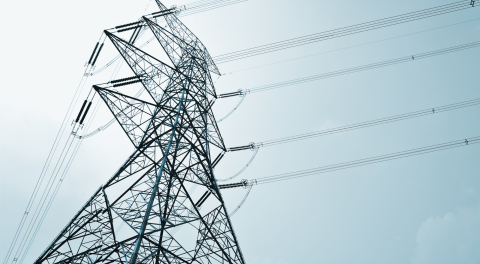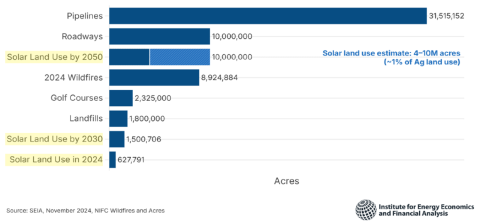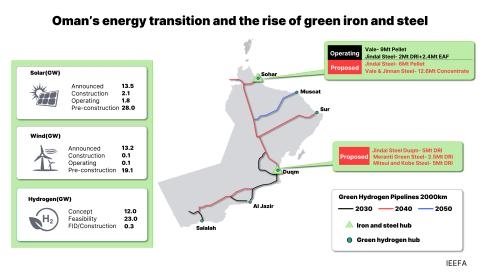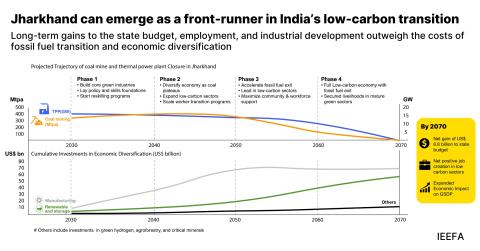Key Findings
Various features of the Spanish power market prevent the cost-effective integration of renewables and undermine new approaches that could reduce capacity payments if not eliminate them altogther.
On a grid with high integration of renewables—like Spain’s—responsive, flexible back-up generation is important to balance out wind and solar power when these are unavailable. Such generation provides value that should be reflected in higher prices at times of scarce or volatile supply.
IEEFA concludes that Spain’s electricity market is hobbled by fundamental weaknesses. By addressing these weaknesses, the country can develop a more effective power market, and so reduce or eliminate the use of consumer-subsidized capacity payments.
Executive Summary
A dozen European countries, including France, Germany, Italy and the U.K., are either considering or implementing capacity markets, mechanisms by which power plant owners are paid regardless of whether their plants generate power.
The main justification for capacity markets is that they are needed supposedly to preserve security of electricity supply.
The argument in support of such markets goes something like this: As growth in wind and solar power drive energy prices lower and force declines in generation by many coal- and gas-fired power plants, these plants cannot survive without subsidies. The truth is that capacity mechanisms typically retard energy security progress by distorting power markets in fundamental, damaging ways. First, they add unnecessary costs that are shouldered by taxpayers and ratepayers—burdens that hurt economic growth. Second, they prop up outdated legacy generation that thwarts modernization of electricity production and leads to system over-capacity and sustains a cycle of dependency that delays the transition to a grid better suited to integrating renewables.
There are exceptions in which capacity markets may be justified. Such mechanisms can make sense, at least temporarily, in countries with a thin surplus of generating capacity over peak demand.
But for the most part capacity markets can be replaced by more cost-effective alternatives.
In this report, IEEFA notes some instructive lessons from capacity markets in Spain.
By way of background, Spain is of interest because it was one of the first countries to introduce capacity payments, in 1997. It has a high grid penetration of wind and solar power. And it is an energy island within Europe, with few cross-border interconnections, a circumstance that complicates the integration of renewables.
Spain is also of special interest because it has a new government (and a new energy minister), which means it has an opportunity now to review and modernize its energy policy.
This report describes some of the core flaws in Spain’s capacity mechanism:
- It follows a price- rather than a quantity-based approach. The country pays for capacity rather than determining how much capacity it needs and then letting a competitive auction set the price. An auction-led approach would prevent paying too high a price for little-used or unused generators.
- It is biased in favor of coal and gas-fired generators rather than new renewable technologies or new transmission interconnections.
- It is overly insular, excluding generation from neighboring France and Portugal, participation that would reduce costs and increase grid flexibility.
- It lacks transparency, leading to questions, for instance, as to why certain, large energy-intensive industries are paid to be included in demand-side response (DSR) programs, while smaller or aggregated units are not.
IEEFA in this report also identifies wider flaws in Spain’s power markets, which contribute to faults in its capacity market. Spain has a low price cap in day-ahead power markets, which undermines remuneration in and effectiveness of a true energy-only market (one that does not include payments for non-energy services such as capacity). And Spain does not have a truly independent energy regulator, making it vulnerable to lobbying by special interests (big utilities, energy-intensive industries and domestic coal producers).
While the original motive for capacity payments in Spain was to meet rapidly rising energy demand in the late 1990s, power demand peaked in 2007. Yet the capacity payments remain. Regulators estimate that about 80 percent of gas-fired power generators in Spain today would be unable to cover their fixed costs without capacity payments, and that most of its coal-fired electricity industry is similarly dependent on capacity payments and other subsidies.
Many deficiencies in Spain’s capacity markets could be overcome by common sense steps that would include transitioning to a quantity-based auction, increasing market transparency, and promoting participation of technologies better suited to balancing variable demand and supply, and stronger interconnection.
However, full modernization of Spain’s electric grid may allow replacement of the capacity mechanism altogether with a true energy-only market model, one that supports trade in and delivery of energy without provision for back-up capacity.
IEEFA makes the following recommendations for Spain’s transition to an energy-only market and for the reduction or elimination of wasteful capacity payments:
- Early retirement of surplus, uneconomic coal and gas capacity, to restore remunerative pricing in energy-only markets.
- Reduction, or perhaps outright elimination, of the power price cap to further restore an appropriate energy market price signal.
- Greater independence for Spain’s energy regulator.
- Changes to imbalance pricing to ensure that suppliers who fail to meet electricity demand in real-time markets are charged the full cost to the system operator for plugging resulting shortfalls in supply.
- Support for workers in the transition from coal and to address energy poverty through targeted support for vulnerable consumers.
An energy-only market would see Spain’s transmission system operator pass costs more directly to suppliers responsible for shortfalls or excesses in electricity in real-time balancing markets. The operator would thus punish imbalances more severely and better reward fastresponse generation. Such an approach would drive suppliers to invest in flexible generation themselves, to adopt cost-saving demand-side response contracts with customers, and to do a better job of forecasting demand and supply. IEEFA notes on this point that forecasts for wind and solar power production are improving, and that by adopting a decentralized market approach Spain would be following an example being incrementally implemented by system operators in some European countries already.
Compared with capacity markets, this approach is better matched to addressing actual system scarcity, rather than relying on utility estimates for theoretical scarcity. It avoids paying needlessly for swathes of unused generation. And an energy-market approach rewards more flexible generation that is far better adapted to volatility, for example, than coal-fired power. An energy-market approach would also reduce the outsize influence of powerful special interests and encourage a more diversified, modern and competitive economy.
Please view full report PDF for references and sources.















